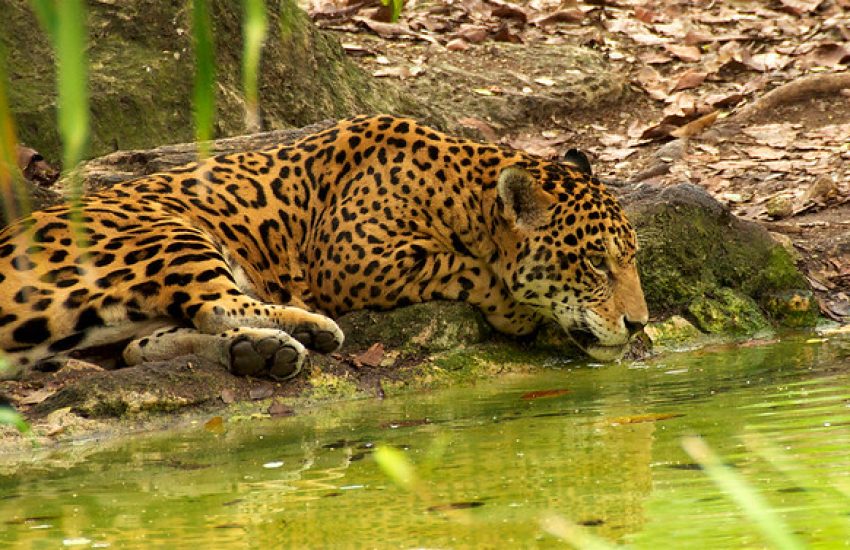Policy brief: tackling policy dilemmas for wetland restoration
08 December, 2025

Policy brief: tackling policy dilemmas for wetland restoration
08 December, 2025
Celebrating 6 years of Mobilising More for Climate
01 December, 2025
Thursday 01 january 2015
The Mexican nature organization GESG has been working to protect the wonderful nature in the Sierra Gorda reserve since as long ago as 1987. With IUCN NL’s support, it has bought almost 500 hectares of forest areas interconnecting major habitats of the jaguar.
Header photo: (c) Carlos Bustamante Restrepo
The Sierra Gorda is home to almost all types of plants and animals in Mexico. The landscape varies from semi-deserts to 3,000 metre-high mountains with the last cloud forests of central Mexico. It is inhabited by more than 350 bird species, 700 butterfly species and dozens of types of reptiles and amphibians. And you can also find all six species of wild cats of Mexico, including the jaguar. This 380,000 hectare area is home not only to animals but also to 638 communities. They are deforesting large areas to grow corn or for livestock grazing. Major habitats for species such as the puma are becoming isolated as a result, reducing animals’ chances of survival.
To protect this unique area in the heart of Mexico, Pati Ruiz Corzo and her family launched the foundation Grupo Ecológico Sierra Gorda in 1987. In close cooperation with the tens of thousands of inhabitants of the Sierra Gorda, they are working on sustainable management of the landscape. This means: stopping harmful activities such as clearing and burning of forests, and instead ensuring reforestation and better conservation. The forest areas that are key to the animals’ survival are bought by GESG and declared conservation areas. Supported by IUCN NL’s land purchase programme, GESG has been able to secure 496 hectares for the jaguar. These areas interlink isolated forest areas.
Owing to the additional protection, the Sierra Gorda is now a sanctuary for jaguars. The cameras placed by GESG provide proof, regularly producing photos of jaguars prowling the forests. The countless animal species in the area are flourishing and its biodiversity has proved even richer than expected. Various new species have already been discovered, such as a magnolia that has been named after Pati’s family. The positive contribution made by GESG to the region is clearly visible as soon as you leave the Sierra Gorda and enter the adjoining state of San Luis Potosi. Its hills are covered with scars of felling and bushfires, and hunting is widespread. The family’s efforts have not gone unnoticed internationally. Pati won the National Geographic Award in 2012 and received the Wangari Maathai Award in 2014.
In order to view this movie you have to accept ‘Social media and advertising’ cookies. Click here to change your cookie settings.
08 December, 2025
As Europe accelerates efforts to restore wetlands and riverine ecosystems in line with biodiversity and climate goals, several complex policy…
01 December, 2025
On the 2nd of December 2025 we celebrated 6 years of Mobilising More for Climate (MoMo4C). During the event, we closed the current chapter on MoMo4C, celebrated our achievements, shared insights,…
